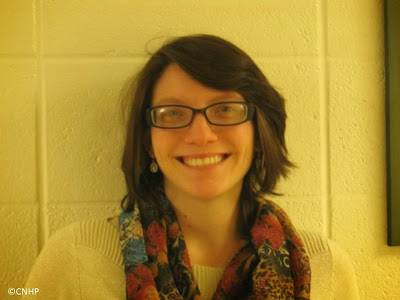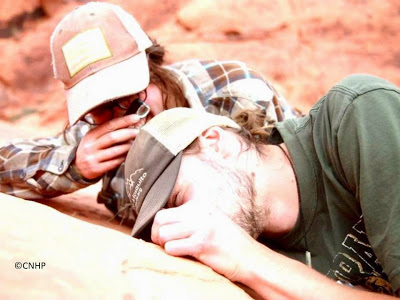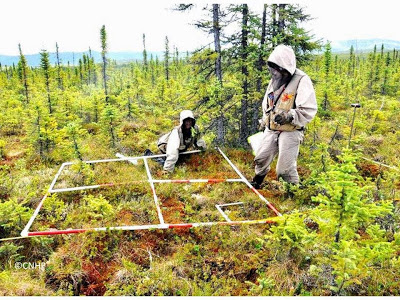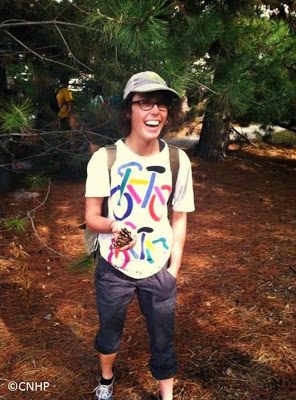Lindsey Power and Claire Tortorelli, two CSU seniors and CNHP student employees, are graduating this month. They both took a little time to write a post that captures their experiences working at CNHP. We consider ourselves lucky to have been able to work with these two talented students. Good luck out there Lindsey and Claire! You will be missed.
Reflections By Lindsey Power
Working with the Colorado Natural Heritage Program during my senior year at CSU proved to be a unique and rewarding experience, both personally and professionally as I move forward to the next steps in my career. When I heard Dave Anderson, the director for CNHP speak at one of the Society for Conservation Biology meetings, the program instantly caught my attention. I was a junior at the time, and beginning to think about topics to write my senior honors thesis on. What caught my attention when I first heard about the CNHP was their commitment to learning as much as possible about rare species and applying this science to concrete management goals and actions.
 |
| Lindsey Power, pictured here, recently completed an honor’s thesis on Sandhill Crane wetland habitat quality in Colorado. |
As a wildlife biology student, most of my classes at CSU have been centered on research. Even my previous work-study at the US Forest Service was centered on a long-term research project. While I absolutely love learning as much as possible about the natural world around us, I have come to realize that without reaching out to people, interacting, and actively getting involved in the fight for conservation, not much change can happen. I wanted to do more for my thesis than a literature review, and I wanted it to make at least a little difference. This was the opportunity that CNHP gave me, both as a work-study student, and as an honors student writing a thesis. Being involved with CNHP gave me the opportunity to see the inside-workings of collaboration as well as personal achievement through being part of discussions, working with data analysis and input, and formulating my own ways to complete projects.
When I started working with CNHP at the beginning of the academic year, I was not entirely sure what to expect or where it would take me. In fact, there were many instances during my two last semesters when I had no idea what I was doing. I think this added, rather than detracted from my experience, and taught me that it is OK to not always know what to do. It was through my confusion that I have met so many wonderful people along the CNHP hallway in the General services building with passions and goals similar to my own; always willing to help, always interested in current tasks, and always building community with one another.
My senior honors thesis titled “Assessing wetland habitat quality for Sandhill Cranes (Grus canadensis) in Colorado” took up much of my time at CNHP. Joanna Lemly and Laurie Gilligan, wetland ecologists at the CNHP asked me if I would like to evaluate their process of assessing habitat quality for CPW’s priority species. Because of my interest in ecosystem dynamics, and in particular wetland dynamics, I happily accepted this challenge. Almost immediately, I dove into the data that the wetland team, very graciously, shared with me, and began to analyze the types of habitat variables necessary for one particular priority species (the Sandhill crane) to occur in Colorado. After reading many scientific journals, manuscripts, reports, and lists of facts about wetlands and the Sandhill crane, I began revising some of the data to try to determine the most important habitat variables and ways that managers could apply restoration and conservation actions. After making graphs and tables, and running a few statistical analyses on the summary data, I was able to pick out the aspects that seemed most important, as well as provide feedback on the entire evaluation process. My work on this thesis constitutes only a fraction of the analyses that the wetland team has done, but I hope that it can be used for future analyses of wetland habitat quality for other priority species. This project was challenging and very rewarding, and will be a great experience to bring into my future career.
 |
| Illustration of a Sandhill Crane, drawn by Lindsey Power. |
During my CNHP work study position, not only did I learn so much more about Colorado’s wetlands and wetland conservation efforts than what any class could offer, but I also experienced what it is like to be totally integrated in research and conservation. I learned how to formulate questions, hypotheses, suggestions, and critiques independently, and then apply them to my work and research. Most importantly, I think, I scratched the surface on just how challenging a career in conservation will be. Yet far from being discouraged, working with the CNHP has empowered me to endeavor in a career in which promoting education about the beauty and importance of the natural world will be my primary goal. It will always be challenging, and there will be many cases where I won’t know what to do. But if there is a community anything like the one at the CNHP, I will be able to face any difficulty and walk away with new knowledge and experiences and a smile.
Reflections By Claire Tortorelli
As a young child, I was determined to be a Scientific Illustrator when I “grew up”.I knew, even then, in order to be happy I must spend my time working in close association with the natural world. Now, I have discovered far more possibilities than my six-year-old self could ever have dreamed of. As a Forestry student at Colorado State University, I am constantly exposed to new ways to become involved in conserving the environment.Although college graduation is just around the corner, and the “real world” is beckoning, I still find myself exploring on hands and knees with hand lens at the ready, wondering, just as I did when I was six.
 |
| Claire Tortorelli and Dusty Gannon geek out with their hand lenses. |
I can vividly recall sitting in one of those large lecture halls on Colorado State University’s campus, listening, intently I’m sure, to Jennifer Ackerfield lecture on my favorite subject, Plant Identification.It was this one specific day that caught my attention.Dave Anderson was just about to present a guest lecture on rare plant classification and the Colorado Natural Heritage Program (CNHP).After handing out plant guide freebies and prompting many laughs from the class, he made an announcement encouraging students interested in plant identification to apply to intern for the Colorado Natural Heritage Program.The very next day I knocked on his office door. To my surprise and great gratification, he offered me a position as an intern, working under Laurie Gilligan in the Wetland Ecology office.I was ecstatic for the opportinutiy to apply my small set of skills acquired in Ackerfield’s class to “real world” scenarios.
Now, almost three years later, I can hardly believe the diversity of experiences I have gained and the wonderful people I have had the opportunity to meet.As an intern for the CNHP, I have been exposed to a wide range of valuable skills, each one applied to a multi-faceted project. Identifying hundreds of pressed plant specimens, using ArcGIS to create maps, prepping summer field gear, entering data, and editing field guides are just a handful of the tasks that have occupied my time at the CNHP. The skills that I have acquired and the tightly knit community that I have become involved with over the years have allowed me to pursue opportunities that I never would have believed possible. Last summer, I was fortunate enough to have been chosen for a botany field crew surveying the diverse plants of the remote Yukon Charley National Park and Preserve, Alaska.This incredible experience tested nearly every aspect of my physical and mental abilities. It was only because of my involvement with the CNHP that I was even considered for the position, and that I was able to keep my head afloat amidst the millions of mosquitos and hundreds of identified plants.
 |
| Claire Tortorelli samples a vegetation plot in Alaska. |
Not only has the Colorado Natural Heritage Program granted me a much improved skill set, a student job, summer employment, and a place in a delightfully welcoming community of nature-lovers, but my time at the CNHP has allowed me to grow as an individual. Like many students entering University, I had a very vague and scattered idea of what I wanted to do with my life. Although I am still unsure of exactly what I want to do or where I want to be, I now have a much more focused idea of the variety of work I would like to be involved with and the type of community I would like to be a member of. The people here have taught me that I never have to let go of that sense of wonder and enthusiasm that I had as a child. I cannot thank the wonderful people of the Colorado Natural Heritage Program enough for all of their kind words and support in preparing me for life post-graduation.
 |
| In keeping with a long line of CNHP field botanists, Claire Tortorelli gets excited about a pinecone. |




